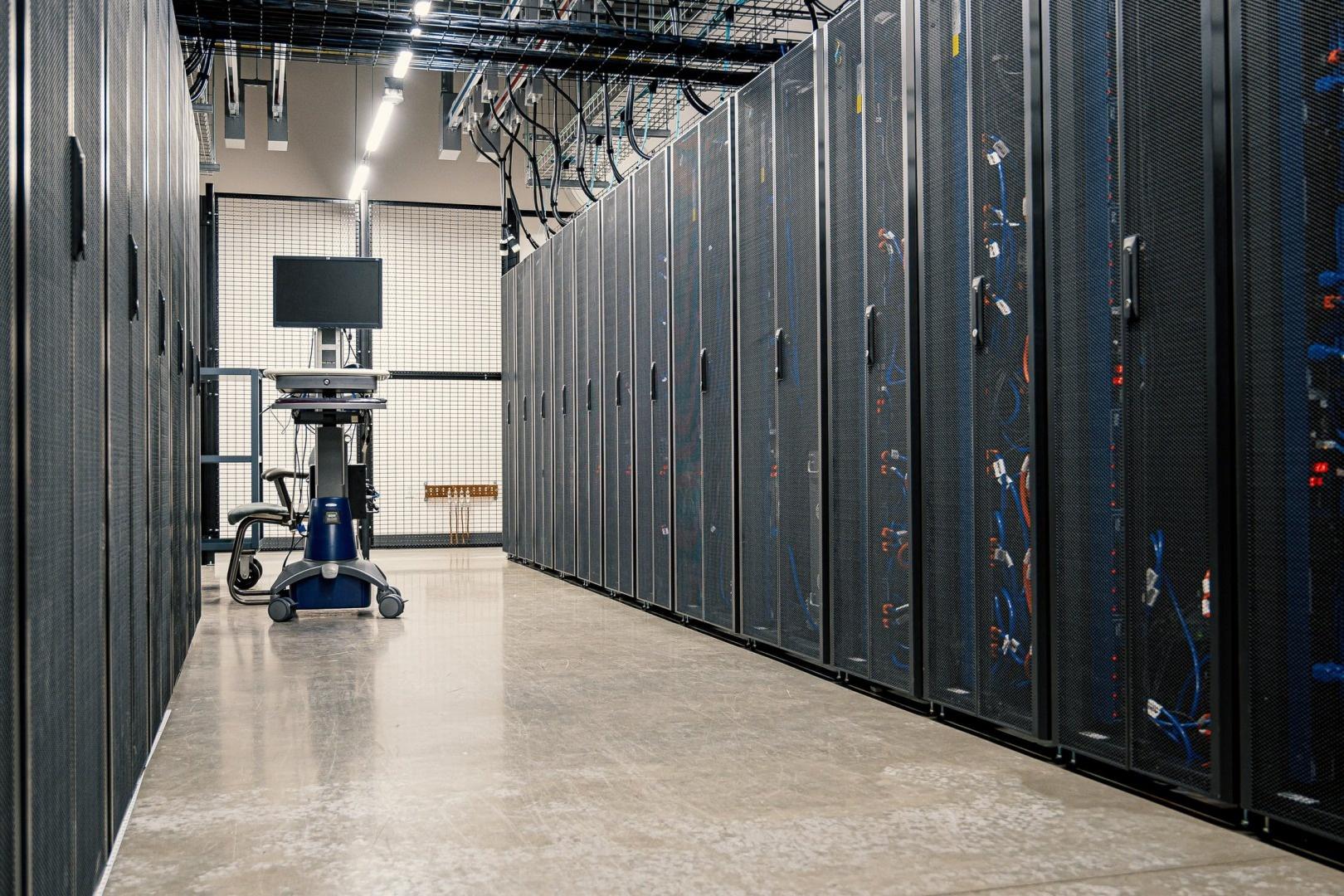TECHNOLOGY
Top Tips for Techies with Limited Work Experience

How to Enter the Data Entry Market: Top Tips for Techies with Limited Work Experience
The role of a data entry clerk is to handle routine clerical tasks linked to entering or updating data on a computer system.
Their main responsibility is to make sure the organization’s database is up-to-date and accurate. Data entry clerks work in most industries and fields. Their skills and responsibilities help companies succeed by organizing and maintaining valuable information both in digital and physical form.
For techies who have limited work experience and want to enter the data entry market, knowing what route to go down can be difficult. Thankfully, we have you covered. Here are some top tips on what you should do beforehand to secure a job interview and start a career in data entry.

Understand What the Position Entails
Data entry positions require a wide selection of skills that are not limited to a single duty or task. The roles of a data entry clerk will vary greatly. This will depend on a business’s goals and needs. If you’re serious about going into the data entry industry, it’s time to brush up on your knowledge of the field so you know exactly what the job entails and whether you’re the right fit for the job.
Data entry roles are advertised using numerous names. These include data entry clerks, data entry specialists, and information processing workers. You will find practically every business at some point, or another needs data entry work performed. This is what makes data entry experience brilliant for employment prospects.
Educate Yourself
The good news about the data industry world is there aren’t any specific educational background requirements needed to step into it. Most employers only ask for a high school diploma to qualify for the role. However, it’s a good idea to educate yourself and consider taking college classes in relevant sectors. Doing so will greatly improve your chances of landing a job.
If you’ve got the time, money, and resources to commit, taking a course can also teach you useful transferable skills that can go hand in hand with a data entry job. This includes improving your communication skills and mastering the art of time management. The latter is crucial for data entry as you’ll have to adhere to strict deadlines.
Grow Your Software Skill Sets
In the data entry industry, having a diverse background in numerous software can boost your chances of securing a job. Different businesses use different software for their data entry work. If you develop software skills and house them on your resume, you should have no issue seeking employment. The most commonly used software applications in the field tend to be Microsoft Word, Excel, PowerPoint, and Open Office.
Lots of people find they can teach themselves data entry software. If you’ve got time on your hands, put it to good use and get started. Once you master these software programs, you can start applying for data entry vacancies and find your dream role.
Work On Typing Speed
One of the primary duties of a good data entry worker is fast typing. This job requires a ton of clerical duties, meaning typing and typing a lot will be commonplace. In general, typists should be accurate at 60 words a minute or less. However, data entry needs to be faster and more accurate. This is because data tends to be numeric, and spell checkers don’t work on numbers. Attention to detail and precision are mandatory traits in data entry.
Now is the time to start perfecting your typing skills. This is normally done through time and practice. To get experience, start by transcribing a document, like a newspaper article or poem. Do this each night before bed. Practice makes perfect so don’t expect quick results overnight! Over time, you should find it becomes easier and easier to type faster.
Boost Your Resume
Having a good resume is one of the first steps towards successfully finding work in the data entry world. Your resume can be the difference between employers taking notice and throwing yours in the trash can. Therefore, take your time to get it perfect. Your resume should showcase your relevant education and experience. If data entry is your focus, make sure you tailor your resume to this field. Put any relevant experience near the top of your resume.
You may benefit from asking a loved one to help you with your resume. They can be a fresh pair of eyes and give you honest feedback. Try not to make your resume too lengthy. After all, employers don’t have the time or patience to read it all. In many cases, they’ll know whether they like your resume within a matter of seconds. Check this article by Adzuna who can help you perfect your resume.
Try Online Roles
The great thing about the world wide web is all the opportunities for work in data entry without having to leave the front door. If you like the idea of working remotely, there are plenty of data entry positions to look into. There are numerous benefits attached to working from home too, such as saving money that you would otherwise spend on commuting.
Be warned that data entry roles from home can be slightly harder to attain. This is because they’re so convenient, meaning there will be a high demand for these positions. Try not to be discouraged if the search takes longer than anticipated.
Contact Temp Agencies
If you’re looking for short-term data entry work, lots of businesses prefer hiring temps, rather than a full-time member of staff. Although it isn’t exactly ideal, having some temp work can be good for building your resume. What’s more, it’s a good foot in the door and a chance to find references and make valuable connections.
You will find most temp companies test your skills by having you take software and typing tests. This allows potential employers to see solid evidence that your resume stands up against what you’ve put on it. In some cases, temp jobs can lead to long-term positions. However, this will depend on the business and your expertise.
Conduct a Mock Job Interview
Once you’ve applied for data entry roles and bagged a job interview, it’s time to get prepared for what awaits. You’ll want to stand out from the crowd and create an excellent first impression. The best place to start is by practicing a mock job interview. Have a look online at the types of questions data entry employers typically ask.
Don’t conduct a mock job interview alone. It’s much better to have a family member or friend run proceedings. That way, you won’t be tempted to look at your notes! What’s more, they can provide honest feedback to you.
The clue is in the name in regard to data entry. This job requires you to input data, which means you’ll need to be fast at typing, have an eye for detail and be able to work to strict deadlines. For techies starting out their careers, data entry can be an excellent launchpad.
There are plenty of companies across the country who are looking for data entry clerks. To be considered for the role and get your career off to a good start, taking our tips above into account will help strengthen your chances of finding a data entry position.
Source link
TECHNOLOGY
Next-gen chips, Amazon Q, and speedy S3

AWS re:Invent, which has been taking place from November 27 and runs to December 1, has had its usual plethora of announcements: a total of 21 at time of print.
Perhaps not surprisingly, given the huge potential impact of generative AI – ChatGPT officially turns one year old today – a lot of focus has been on the AI side for AWS’ announcements, including a major partnership inked with NVIDIA across infrastructure, software, and services.
Yet there has been plenty more announced at the Las Vegas jamboree besides. Here, CloudTech rounds up the best of the rest:
Next-generation chips
This was the other major AI-focused announcement at re:Invent: the launch of two new chips, AWS Graviton4 and AWS Trainium2, for training and running AI and machine learning (ML) models, among other customer workloads. Graviton4 shapes up against its predecessor with 30% better compute performance, 50% more cores and 75% more memory bandwidth, while Trainium2 delivers up to four times faster training than before and will be able to be deployed in EC2 UltraClusters of up to 100,000 chips.
The EC2 UltraClusters are designed to ‘deliver the highest performance, most energy efficient AI model training infrastructure in the cloud’, as AWS puts it. With it, customers will be able to train large language models in ‘a fraction of the time’, as well as double energy efficiency.
As ever, AWS offers customers who are already utilising these tools. Databricks, Epic and SAP are among the companies cited as using the new AWS-designed chips.
Zero-ETL integrations
AWS announced new Amazon Aurora PostgreSQL, Amazon DynamoDB, and Amazon Relational Database Services (Amazon RDS) for MySQL integrations with Amazon Redshift, AWS’ cloud data warehouse. The zero-ETL integrations – eliminating the need to build ETL (extract, transform, load) data pipelines – make it easier to connect and analyse transactional data across various relational and non-relational databases in Amazon Redshift.
A simple example of how zero-ETL functions can be seen is in a hypothetical company which stores transactional data – time of transaction, items bought, where the transaction occurred – in a relational database, but use another analytics tool to analyse data in a non-relational database. To connect it all up, companies would previously have to construct ETL data pipelines which are a time and money sink.
The latest integrations “build on AWS’s zero-ETL foundation… so customers can quickly and easily connect all of their data, no matter where it lives,” the company said.
Amazon S3 Express One Zone
AWS announced the general availability of Amazon S3 Express One Zone, a new storage class purpose-built for customers’ most frequently-accessed data. Data access speed is up to 10 times faster and request costs up to 50% lower than standard S3. Companies can also opt to collocate their Amazon S3 Express One Zone data in the same availability zone as their compute resources.
Companies and partners who are using Amazon S3 Express One Zone include ChaosSearch, Cloudera, and Pinterest.
Amazon Q
A new product, and an interesting pivot, again with generative AI at its core. Amazon Q was announced as a ‘new type of generative AI-powered assistant’ which can be tailored to a customer’s business. “Customers can get fast, relevant answers to pressing questions, generate content, and take actions – all informed by a customer’s information repositories, code, and enterprise systems,” AWS added. The service also can assist companies building on AWS, as well as companies using AWS applications for business intelligence, contact centres, and supply chain management.
Customers cited as early adopters include Accenture, BMW and Wunderkind.
Want to learn more about cybersecurity and the cloud from industry leaders? Check out Cyber Security & Cloud Expo taking place in Amsterdam, California, and London. Explore other upcoming enterprise technology events and webinars powered by TechForge here.
TECHNOLOGY
HCLTech and Cisco create collaborative hybrid workplaces

Digital comms specialist Cisco and global tech firm HCLTech have teamed up to launch Meeting-Rooms-as-a-Service (MRaaS).
Available on a subscription model, this solution modernises legacy meeting rooms and enables users to join meetings from any meeting solution provider using Webex devices.
The MRaaS solution helps enterprises simplify the design, implementation and maintenance of integrated meeting rooms, enabling seamless collaboration for their globally distributed hybrid workforces.
Rakshit Ghura, senior VP and Global head of digital workplace services, HCLTech, said: “MRaaS combines our consulting and managed services expertise with Cisco’s proficiency in Webex devices to change the way employees conceptualise, organise and interact in a collaborative environment for a modern hybrid work model.
“The common vision of our partnership is to elevate the collaboration experience at work and drive productivity through modern meeting rooms.”
Alexandra Zagury, VP of partner managed and as-a-Service Sales at Cisco, said: “Our partnership with HCLTech helps our clients transform their offices through cost-effective managed services that support the ongoing evolution of workspaces.
“As we reimagine the modern office, we are making it easier to support collaboration and productivity among workers, whether they are in the office or elsewhere.”
Cisco’s Webex collaboration devices harness the power of artificial intelligence to offer intuitive, seamless collaboration experiences, enabling meeting rooms with smart features such as meeting zones, intelligent people framing, optimised attendee audio and background noise removal, among others.
Want to learn more about cybersecurity and the cloud from industry leaders? Check out Cyber Security & Cloud Expo taking place in Amsterdam, California, and London. Explore other upcoming enterprise technology events and webinars powered by TechForge here.
TECHNOLOGY
Canonical releases low-touch private cloud MicroCloud

Canonical has announced the general availability of MicroCloud, a low-touch, open source cloud solution. MicroCloud is part of Canonical’s growing cloud infrastructure portfolio.
It is purpose-built for scalable clusters and edge deployments for all types of enterprises. It is designed with simplicity, security and automation in mind, minimising the time and effort to both deploy and maintain it. Conveniently, enterprise support for MicroCloud is offered as part of Canonical’s Ubuntu Pro subscription, with several support tiers available, and priced per node.
MicroClouds are optimised for repeatable and reliable remote deployments. A single command initiates the orchestration and clustering of various components with minimal involvement by the user, resulting in a fully functional cloud within minutes. This simplified deployment process significantly reduces the barrier to entry, putting a production-grade cloud at everyone’s fingertips.
Juan Manuel Ventura, head of architectures & technologies at Spindox, said: “Cloud computing is not only about technology, it’s the beating heart of any modern industrial transformation, driving agility and innovation. Our mission is to provide our customers with the most effective ways to innovate and bring value; having a complexity-free cloud infrastructure is one important piece of that puzzle. With MicroCloud, the focus shifts away from struggling with cloud operations to solving real business challenges” says
In addition to seamless deployment, MicroCloud prioritises security and ease of maintenance. All MicroCloud components are built with strict confinement for increased security, with over-the-air transactional updates that preserve data and roll back on errors automatically. Upgrades to newer versions are handled automatically and without downtime, with the mechanisms to hold or schedule them as needed.
With this approach, MicroCloud caters to both on-premise clouds but also edge deployments at remote locations, allowing organisations to use the same infrastructure primitives and services wherever they are needed. It is suitable for business-in-branch office locations or industrial use inside a factory, as well as distributed locations where the focus is on replicability and unattended operations.
Cedric Gegout, VP of product at Canonical, said: “As data becomes more distributed, the infrastructure has to follow. Cloud computing is now distributed, spanning across data centres, far and near edge computing appliances. MicroCloud is our answer to that.
“By packaging known infrastructure primitives in a portable and unattended way, we are delivering a simpler, more prescriptive cloud experience that makes zero-ops a reality for many Industries.“
MicroCloud’s lightweight architecture makes it usable on both commodity and high-end hardware, with several ways to further reduce its footprint depending on your workload needs. In addition to the standard Ubuntu Server or Desktop, MicroClouds can be run on Ubuntu Core – a lightweight OS optimised for the edge. With Ubuntu Core, MicroClouds are a perfect solution for far-edge locations with limited computing capabilities. Users can choose to run their workloads using Kubernetes or via system containers. System containers based on LXD behave similarly to traditional VMs but consume fewer resources while providing bare-metal performance.
Coupled with Canonical’s Ubuntu Pro + Support subscription, MicroCloud users can benefit from an enterprise-grade open source cloud solution that is fully supported and with better economics. An Ubuntu Pro subscription offers security maintenance for the broadest collection of open-source software available from a single vendor today. It covers over 30k packages with a consistent security maintenance commitment, and additional features such as kernel livepatch, systems management at scale, certified compliance and hardening profiles enabling easy adoption for enterprises. With per-node pricing and no hidden fees, customers can rest assured that their environment is secure and supported without the expensive price tag typically associated with cloud solutions.
Want to learn more about cybersecurity and the cloud from industry leaders? Check out Cyber Security & Cloud Expo taking place in Amsterdam, California, and London. Explore other upcoming enterprise technology events and webinars powered by TechForge here.
-

 SEARCHENGINES6 days ago
SEARCHENGINES6 days agoGoogle Core Update Volatility, Helpful Content Update Gone, Dangerous Google Search Results & Google Ads Confusion
-

 SEO6 days ago
SEO6 days ago10 Paid Search & PPC Planning Best Practices
-

 MARKETING7 days ago
MARKETING7 days ago2 Ways to Take Back the Power in Your Business: Part 2
-

 MARKETING5 days ago
MARKETING5 days ago5 Psychological Tactics to Write Better Emails
-

 SEARCHENGINES5 days ago
SEARCHENGINES5 days agoWeekend Google Core Ranking Volatility
-

 MARKETING6 days ago
MARKETING6 days agoThe power of program management in martech
-

 PPC7 days ago
PPC7 days agoCritical Display Error in Brand Safety Metrics On Twitter/X Corrected
-
SEARCHENGINES4 days ago
Daily Search Forum Recap: April 15, 2024















You must be logged in to post a comment Login